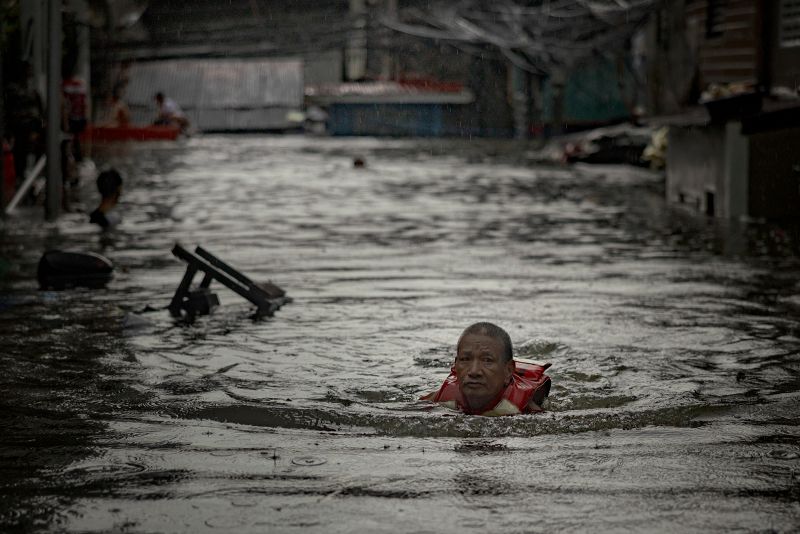The bustling city of Manila, the capital of the Philippines, was brought to a standstill as torrential floodwaters inundated streets, homes, and businesses in its wake. Typhoon Goni, the year’s most powerful tropical cyclone, caused the most damaging flooding in years, leaving thousands of people stranded and grappling with the aftermath of the catastrophe. This incident raises an urgent cry for collective global climate action.
Typhoon Goni rocketed into the category of super storms with its potent enterprise. With wind gusts reaching over 225 km/h, the weather system uprooted trees, swept away vehicles, and devastated countless buildings in Manila, demonstrating the domineering presence of such menacing weather patterns. The torrential rains triggered massive landslides in several provinces, cutting off access to emergency responders and rescue services, further complicating the situation.
As floodwaters rose, thousands of inhabitants found themselves stranded on rooftops or taking refuge in evacuation centers. As per the Philippines’ disaster management agency, nearly 400,000 people have been displaced or affected, with the death toll tirelessly climbing. Besides, with Manila and neighboring provinces submerged under feet of floodwater, access to clean food, water, and medical supplies is under threat. The reports of dwindling supplies in evacuation centers paint a stark picture of a region under siege by mother nature.
However, the relentless onslaught of Typhoon Goni is not an isolated incident. For the Filipinos, it seemingly represents yet another dreary chapter in their yearly battle against typhoons. As an archipelagic country, the Philippines sits in the western Pacific’s typhoon belt, making it susceptible to an average of 20 typhoons each year, some of which grow into super typhoons. Yet, Goni has been deemed as the world’s strongest storm of 2020, signaling a worrying escalation in the severity of these weather events.
Many believe that this escalation can be traced back to the changing climate. Scientists confirm that higher ocean temperatures, stimulated by global warming, serve as fuel for more powerful and destructive typhoons. More explicitly, rising temperatures can cause more intense rainfall, thus increasing the potential for extreme flooding, as witnessed in Manila.
Reacting to the immense destruction caused by Typhoon Goni, voices pleading for a commitment to effective climate action strategies have grown louder. Activists, politicians, and citizens alike implore the international community to take notice of the typhoon-ravaged Philippines and use it






























